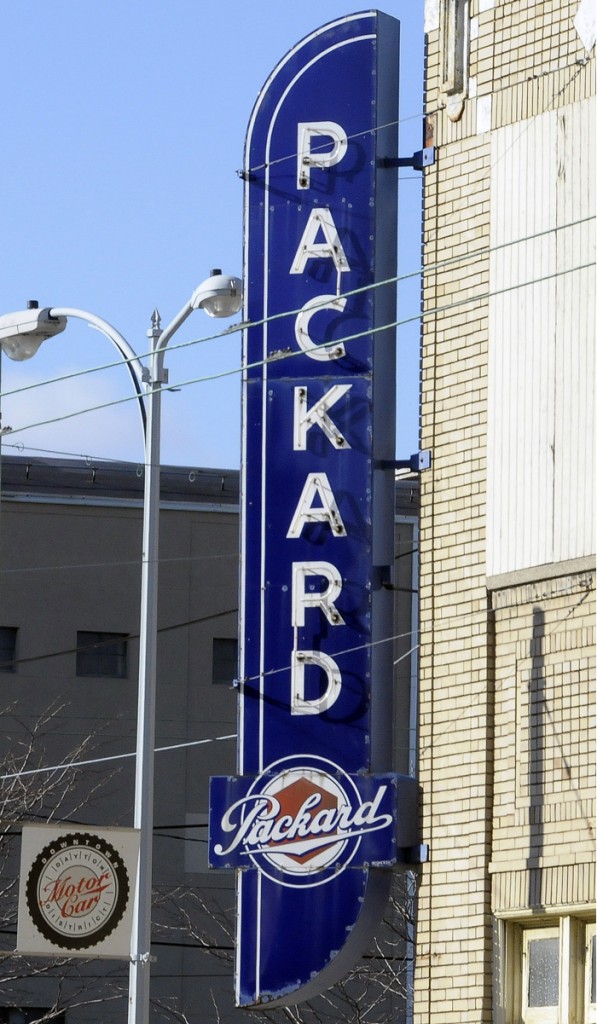That Packard name. It conjures up thoughts of the rich, the famous, long limos along with the brand’s perfectly molded fenders and hoods. You get the idea!
That was the theme that the Packard company strived for, but for period motorheads and engine builders, those skillfully-built engines that fit in all types of racing machines were of more interest. The motorsports implications stretched even further with the company’s involvement with military production of fighter aircraft engines during World War II.
But there is one designation that really had motorsports engine builders panting through the years. That designation was V12. That heritage goes back to the teens of the 20th century when small engines still had 12 cylinders. But there were also other six-and-eight cylinder engines that would find their way into race machines.
Packard produced its first car in 1899 and would stay around until the late 1950s. There have been many motorsports events in which Packard engines participated, and a high percentage of the time, participated at a high level.

Packard Engines in Air Racing
At the end of World War II, there was great availability of surplus equipment at unbelievable prices. Fighter engines were very popular, particularly the Packard V-1650 Merlin engines, many of which were modified for air racing events such as the Thompson Trophy, Bendix Trophy and Cleveland Air Races. A little-known fact is that these engines were produced under license to Rolls-Royce.
Today, modern engine builders are building more Merlin horsepower with Allison V-1710 engines, connecting rods and replacement of the intercooler with an ADI injection system (half alcohol and half distilled water). Also, the manifold pressures on these Packard engines have been increased dramatically enabling the vintage engines to acquire some 3,800 horsepower.
Land Speed Racing
The Packard engine took charge early – in 1904 at Daytona, a four-cylinder Packard engine powered a vehicle called the ‘Gray Wolf’ and covered the five-mile course record of four minutes and 21.6 seconds. The tiny engine produced only 24 horsepower, yet pushed the 1,310 pound two-seater machine to almost 60 mph. It was a time when such events enjoyed huge attention and made the drivers celebrities.
The WW I-vintage Packard V12 Liberty engine brought forth a significant increase in speed in 1919. Driven by Indy Car star Ralph DePalma at the Daytona Measured Mile, a new record was established at 149.875 mph.
In 1927, the Packard Liberty engine was tested again in the Higman Special racecar. It had a gearbox and a chain-drive set-up. Its best effort was a 171.02 mph clocking at the Brooklands Road Course in England. This particular Liberty was modified with four Zenith carburetors and custom-designed pistons.
The Liberty engine showed strong again about a decade later, only in this case, on the White Triplex Special, there were three Libertys installed – two side-by-side in the rear and one centered in front of them. The combined power of the three 27 liter Liberty engines was quoted as 1,500 horsepower from its 36 total cylinders. To keep things simple there was a clutch or gearbox with just a fixed rearend ratio. But when it was ready to try a run, it was Indy 500 driver Ray Keech at the wheel turning a scary 207.55 mph. Driver Lee Bible would later be killed trying to beat Keech’s record.

Oval Track Racing
Data is a bit sparse on this category of Packard participation, but we know Packards competed on this track too. First of all, there were three Packard-powered Indy Cars in the 1923 Indy 500. They were very respectable with finishes of 14th, 15th and 18th. That 18th place finish was unique because it was wheeled by noted Packard driver Joe Boyer who had a number of open wheel accomplishments. Four years earlier, the 1919 race was led to the starting line by a Packard Pace Car and reportedly two Packard Indy Cars attempted to make the race.
During the early part of the 20th century, there were some Big Cars (now sprint cars) seen with Packard powerplants. One of those cars was a 1919 Packard with a straight-six engine, while a 1923 model carried a V12 powerplant, probably a variant of the smaller V12s of the time period.
Another photo showed a 1916 Packard Twin-Speed 299 car with a V12 engine, possibly a Liberty engine. Still another Big Car was pictured with the lettering ‘Packard S8’, probably indicating a straight-eight engine under the hood.

Packards in Boat Racing
And even in those early years, Packard realized the importance of on-the-water motorsports and really supported it.
Packard’s involvement in boat racing goes back to the early 1920s when the engine of choice was the Model 1237 V12 aero engine with the four numerals indicating its cubic inch displacement. The stock horsepower of the engine was reported as 315 horsepower, but no doubt was probably producing 400 or more in race trim.
A number of famous boats of that era used the powerplant including the ‘Packard Chriscraft II and III boats and the ‘Miss Packard,’ which competed in a number of unlimited races such as the 150-mile International Sweepstakes race.
Packard-powered boats were consistent winners in the Gold Cup series. The boats were often built by the immortal Gar Wood. But in 1922, the governing American Powerboat Association (APBA) decided to lower the engine displacement to only 625 cubic inches, which was about half that of the 1237 cubes of the Packard 1237 engine.
But never fear, Carl Vincent, a chief engineer for Packard, came up with a most innovative solution to the problem when he removed the six cylinders in the right bank of the engine-Merlin and capped them off. All of a sudden, we had a 617 cubic inch engine, eight cubes less than that specified by the new rule. A chief engineer acting as an engine builder, something that certainly was a one-on-one situation.















